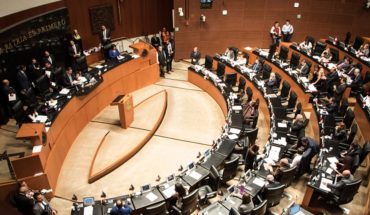With the arrival of Hitler to power in 1933, Bauhaus – considered by the nazis as a sort of “cultural bolshevism” – was forced to close its doors.
But it was the persecution of the nazis, ironically, that made that philosophy raised by this school afterwards and charged more relevance.
After the closure of the school the majority of the members of the Bauhaus primarily migrated to United States and there inspired a new generation of architects and designers that scarred generations to come.
One of the examples showing the imprint of this school currently, is the success of one of the most popular economic world, Ikea, furniture chains told the BBC Michael Craig Martin, artist painter and conceptual Irish.
8 iconic buildings of the architects who were expelled from Germany by the nazis “the true heir to the Bauhaus is Ikea. “It is in some way everything you dreamed of the Bauhaus: production on a large scale of things simple and well-designed made cheaply for a mass audience”.
To celebrate the 100th anniversary of this institution whose influence goes beyond the field of architecture, we share their key innovations 3.
1. integration of disciplines Bauhaus means, literally “build House”, but the idea of Gropius was not only to build buildings or in becoming architects. His idea was to create a new kind of artists who could create whatever.
In the workshops of the Bauhaus students were experiencing in various disciplines: learned from a make furniture to objects of Alfareriapara Gropius, there was “a differs essential between an artist and a craftsman”. Both were two sides of the same coin.
In the Bauhaus students engaged in ceramics, printmaking, bookbinding and carpentry workshops. They studied typography and advertising.
They were learning the most basic arts to start creating from scratch, with a fresh look.
Gropius designed a diagram that shows the structure of the teaching at the school in 1922.
In this diagram is architecture in the Center, surrounded by other activities and disciplines.
On the other hand, to learn how to design, students had to participate in practical work sessions where experimenting with materials, colours and shapes without a specific goal in mind, as opposed to the extensive theoretical classes offered by the schools of traditional architecture.
2. the form follows the function may today seem obvious principle that form must conform to a function. However, at the time that led to the Bauhaus, this was not the norm.
The school rejected the ornamental elements that did not meet a particular function, present in the architecture and early 20th century objects, to create objects naked, made only with fair and necessary materials.
The result is an austere, but curiously pleasant design view.
Nest tables are a classic of the BauhausEn multidisciplinary workshops of the school, the students first studied the nature of the object in question and how it should fulfill its function in a practical and rational manner.
An example of functionality and simplicity of these designs are the nest tables designed by Josef Albers, when he was the director of the Bauhaus furniture workshop.
Another is the Chair Wasilly designed by Marcel Breuer in 1925-26, made in metal and leather, using only enough material to provide maximum comfort.
Both furniture still in force today.
3 type the influence of the German school in typography and graphics was immense.
In typography, Bauhaus bent also by clear letters, unadorned and easy to entenderUno of its most lasting effects can be seen on posters and signs that help us to walk a space that is not us family as for example an airport.
Most used a type of lyrics and simple symbols to convey information. This is under the influence of the Bauhaus, which was in the words as a comprehensive graphic element to the architectural work.
Also here the meaning of the words is prioritized. Design, came later.
School popularized the use of the the fonts sanserif (or sans serif) in which the characters do not have endings known as auctions or serifs.
This reduction of the ornamentation is an integral part of the approach to the design of the school.
And although today may seem a triviality, was at the time a radical decision.
translated from Spanish: Three innovations of the Bauhaus, the school of architects exiled by the nazis created modernity
April 8, 2019 |





